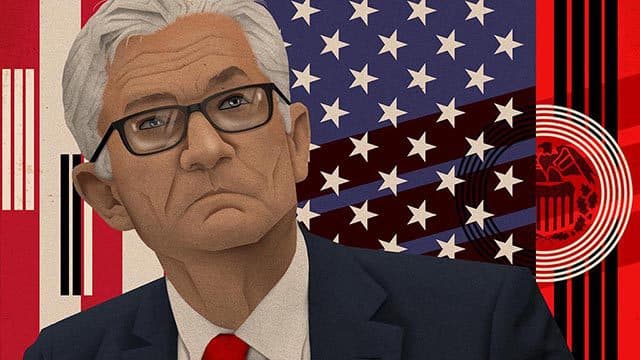Fed to Begin Tapering This Month, Bottlenecks Will Persist ‘Well into 2022’
Bottlenecks and supply chain constraints are not going to go away until “well into 2022,” Powell warned, but the central bank will continue to keep an eye on things.

Jerome Powell, chair, Federal Reserve, Blockworks Exclusive Art by Axel Rangel
- The Federal Reserve will begin tapering asset purchases by mid-November
- The central bank elected to keep interest rates where they are
The Federal Reserve will begin scaling back its pandemic aid later this month, the central bank announced Wednesday.
Tapering of monthly bond purchases at a reduction of $15 billion a month will begin shortly, the Federal Open Market Committee said in its post-meeting statement. The central bank is currently purchasing $120 billion in assets a month. The tapering will be broken down as a $10 billion reduction in Treasuries and a $5 billion reduction in mortgage-backed securities.
The committee decided to begin tapering in this way “in light of the substantial further progress the economy has made toward the Committee’s goals since last December,” the statement said.
The central bank elected to keep interest rates where they are — near zero. Officials have said that this is the most effective tool in helping to advance the economic recovery as the employment situation remains less than ideal.
Inflation may present a challenge to the Fed’s current plans, though. Prices have risen 4.4% in the year since September. The Fed’s inflation goal is 2% annually. Officials insist that supply chain issues are driving the higher prices.
“The inflation that we’re seeing is really not due to a tight labor market,” said Fed Chairman Powell during a press conference Wednesday. “It’s due to bottlenecks, and it’s due to shortages and it’s due to very strong demand meeting those.”
Bottlenecks and supply chain constraints are not going to go away until “well into 2022,” Powell warned, but the central bank will continue to keep an eye on things.
When asked if the rate of wage growth, which has picked up in recent months, was a concern, Powell said no.
“We don’t have evidence of a wage price spiral yet,” he said. “We will be watching this carefully, at this point we don’t see troubling increases in wages, and we don’t expect to, but we will be watching.”
Powell, who is up for renomination after his term ends on February 5, 2022, declined to comment on President Biden’s choice for the role. Biden indicated Tuesday that he would be announcing his pick for the head of the central bank soon.






